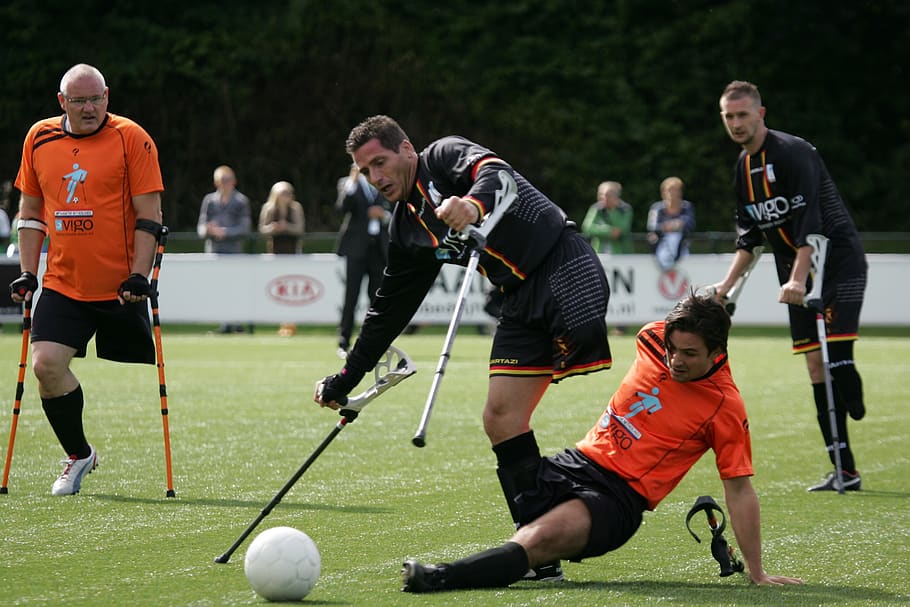Team Handicap
Establishing and applying a golf handicap under the United States Golf Association’s system isn’t difficult.
The USGA’s formulas do the heavy mathematical lifting to ensure that golfers of varying skill levels can compete on an equitable basis. All you have to do is go out on the course and play golf. Once you’ve established your handicap, you’re ready to take on all comers with a fighting chance of emerging victorious.
The handicaps of both team members are added together; the team with the lowest combined handicaps plays at scratch. The other team then subtracts the low team's handicap from theirs, divides the. For example, let’s suppose that a team has gross scores of 4 and 5 and corresponding net scores of 3 and 5 (the golfer who got the 4 has a handicap stroke so his net score on the hole is 3). Then the team net best-ball is 3, the lower of the two net scores.
Establishing a Handicap Index
Divide the team’s total handicap number by twice the number of players on the team. For example, if a three-player team includes golfers with handicaps of 8, 10 and 12, respectively, divide the. See what the USGA is doing to ensure a strong future for the game. The USGA promotes and conserves the true spirit of the game of golf as embodied in its ancient and honorable traditions. It acts in the best interests of the game for the continued enjoyment of those who love and play it. The individual handicap, five man team, first to 200 points, total team aggregate format competition, had Totton's Josh Barnes (receive +80) drawn out against Mike Henstredge (receive +95) first. Both players kept pace with each other up until the 150 mark, but an inspired Barnes made a.
To gain an official handicap, join a club that’s licensed to use the USGA’s handicap system. That doesn’t necessarily mean joining a club located at a single course. Several other types of organizations, including some business or fraternal groups, can qualify as USGA-certified clubs. Confirm with a club pro or officer that your chosen club is certified. To begin establishing your handicap, play five rounds on courses with course and slope ratings.

Post your scores with your club’s handicap committee, which will use the USGA system to calculate your preliminary handicap index, based on your scores and the difficulty of the courses you’ve played. Continue to post your scores after every round. Because a USGA handicap measures a golfer’s potential, rather than his average play, your index will eventually be based on the best 10 scores among your most recent 20 rounds of golf. Think of your 'handicap index' as the number that you will use to find your handicap at different courses and from different sets of tees.
Calculating the Course Handicap
A handicap index is convert to a course handicap based on the difficulty of the course. Most clubs post a chart on which you’ll see a range of indexes in one column and corresponding course handicaps in another column. Look up your handicap index on the chart to determine your course handicap for that location and the set of tees you will be playing. Many courses also have handicap computers that will have a handicap conversion utility.
Alternatively, obtain the course’s slope rating, and then plug the rating and your handicap index into the USGA’s online calculator.
Team Handicap Polo

If the course you’re playing is more difficult than the standard course rating of 113, your course handicap will be higher than your index. Conversely, your handicap will be lower than your index if the course’s slope rating is lower than 113.
Applying Handicaps in Stroke Play
Course handicaps, which are always whole numbers, are applied straightforwardly in stroke-play events. For example, if your handicap is 7, you’ll subtract 7 from your score at the end of the round. If your course handicap is 24, you subtract 24 from your final score. In a team event like better ball of partners, you apply the handicaps per hole. Your scorecard will rank each hole by difficulty, with the most difficult hole ranked No. 1 and the easiest hole 18.
A 7-handicapper, therefore, would subtract one stroke on each of the seven most difficult holes to obtain his net score on the hole. In better ball of partners, the lowest net score is the team's score. For example, if the 7-handicapper has a net 4 on the hole and his partner has a net 3, the team's score is 3.
Applying Handicaps in Match Play
In match play, the handicaps are applied hole by hole, as in the stroke play better ball of partners, with one exception. In a head-to-head match, the players use the difference between their handicaps. For example, if Player A carries a course handicap of 3 and Player B’s course handicap is 12, Player B receives nine strokes, one at each of the course’s nine most difficult holes, while Player A plays at scratch, receiving no handicap strokes.
Handicapping Team Golf Events
In a four-person match in which the players’ course handicaps are 2, 5, 11 and 17, respectively, then the three highest handicappers should calculate their handicap strokes relative to the best player. The first player would play at scratch, the second player would receive three handicap strokes, the third player would get nine strokes and the fourth player would receive 15.